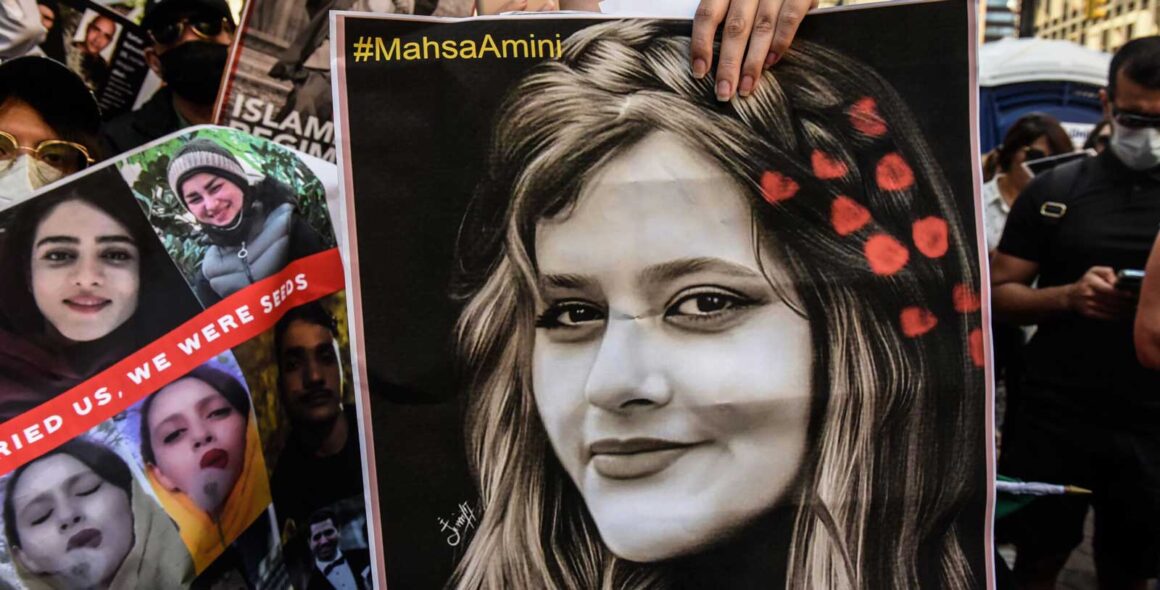

By Dave Stockton
PROTESTS FOLLOWING the murder of 22 year-old Jina Mahsa Amini have developed into the most serious challenge to the Iranian dicatorship in four decades.
Women have taken the lead in daily demonstrations and have been joined by students in the country’s universities and schools, and, crucially, workers taking mass political strike action. By tearing off their hijabs women strike a blow at the ideology of the mullahs’ dictatorship, gender oppression and patriarchy. Their actions show that not only women, but the population as a whole, are no longer willing to continue living as they have since the clerical regime crushed the Iranian Revolution in 1979. This is a sure hallmark of a deeply revolutionary situation.
Another feature is the role played by the minority nationalities of the country—Kurds, Baluch and the Arabic speakers of Khuzestan province. In part because Mahsa Amini was Kurdish Iranian, Kurdistan has been a major focus for mass mobilisations reaching the level of local uprisings. In the second largest Kurdish city, Sine (Sanandaj), security forces were pushed back from parts of the city in early October.
The deadliest incident so far saw police and the Revolutionary Guards fire on protesters in Zahedan, in Sistan and Baluchistan Province on 30 September. Some reports say that at least 66 people were killed. Baluchistan is one the country’s poorest regions and home to most of the country’s Sunni minority.
The other element in the revolutionary situation has been the action of growing numbers of Iranian workers. They too have reasons to hate the regime. The Iranian economy has been stagnating for about a decade. There is permanently high inflation, ranging between 10% and 20% per year. Unemployment is officially 11–13%, and for women and young people it’s twice that. The minimum wage has fallen in real terms from $400 a month in 2010 to $130 in 2018. Today, about half of the population lives below the poverty line.
In 2019 workers formed the vanguard of the mass movement against the regime, raising economic demands in conjunction with demands for the overthrow of the mullahs’ rule. In the spring and summer of 2022, the country witnessed important illegal or semi-legal strikes by workers against price increases, poor working conditions and for the payment of outstanding wages. Every struggle sees repression and the arrest of militant workers leaders.
It is therefore no wonder that the working class quickly rallied behind the protest movement in September. In the Kurdish regions, the majority of workers have taken part in six regional mass strikes so far. Strikes spread rapidly in October to gas plants in Asalouye and Kangan in South Pars, in Bushehr in southern Iran. On 19 October, workers of Asaloye petrochemical plants in Bandar Abbas, Abadan, and the Haftpeh sugar cane company joined in, as did Ghadir Niriz Fars Steel workers.
The convergence of these developments—the massive women’s movement combined with movements of the oppressed nationalities and the militant workers movement, create a situation in which the revolutionary overthrow of the regime can be achieved. Succes will require unity in action: an all out general strike to paralyse the dictatorship and win over its rank and file soldiers.
For this the revival of Iran’s revolutionary tradition of workers‘ councils (shoras) at workplace, city and national level is crucial. But the lessons of the mass democratic uprisings of the Arab Spring must be learned. In Egypt for example, the militants of Tahrir Square achieved the departure of the dictator but not the creation of alternative organs of power or the disintegration of the control of the Egyptian Army’s High Command. After the episode of the elected Muslim Brotherhood elected president we saw the retun of a dictatorship under El Sisi—if possible even worse than that of Mubarak.
What the struggles of the Arab Spring indicate is the vital vanguard role of the working class, the creation of shoras which bring in the representatives of women and oppressed nationalities first as instruments of mobilisation, then of the revolutionary overthrow of the regime and the creation of an alternative power.
Revolutionary socialists and communists in Iran can play a vital role if they constitute a new workers’ revolutionary party based on a programme of permanent revolution. In order to complete the democratic revolution against the dictatorship it is necessary to overthrow the capitalist state itself and establish workers’ power and socialist planning as part of the fight for a federation of socialist republics.